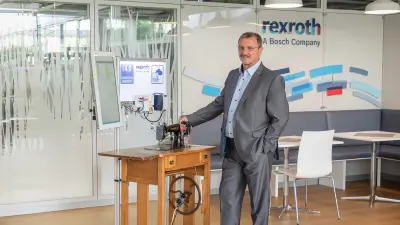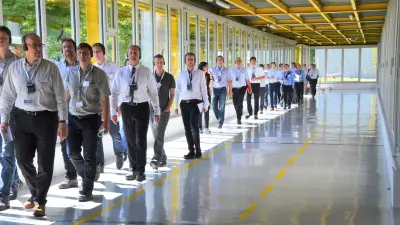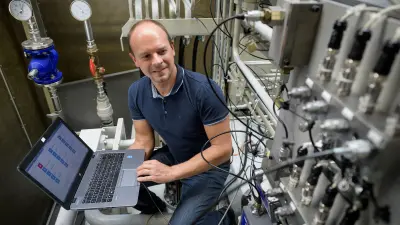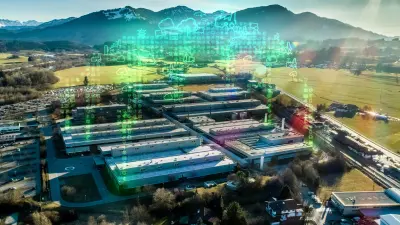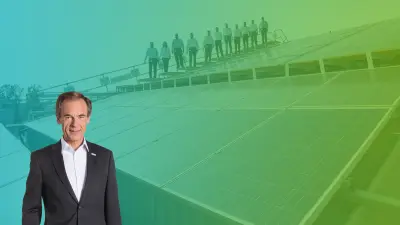Ten years of Industry 4.0
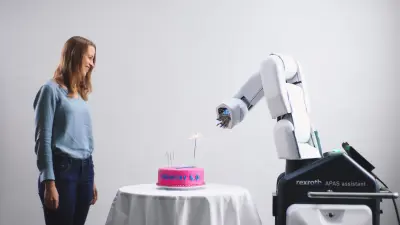
Happy 10th birthday, Industry 4.0!
It’s been a decade since we officially welcomed you to the company. But that was just a formality, as you had already been an idea for a long time. We had a vision of smart factories with machines that are connected and communicate with each other — and people at the center of it all, orchestrating production. In 2011, we finally gave you an official name: Industry 4.0 — the fourth industrial revolution. In giving you this name, we also called upon industry, science, and politics to lay out a path for you. A path toward the factory of the future — one in which people and machines work together as the best kind of team, manufacturing products in a way that is transparent, efficient, and conserves resources. A factory where the only things that are static and fixed will be the floors, walls, and ceilings; everything else will be variable and flexible.
You have not remained merely a vision of the future, but have become a global market worth billions. German companies alone invest more than two billion euros in you each year. And that figure is rising rapidly.
And what about the two of us? We have developed into a single unit, an inseparable team. People and machines have become colleagues. Together, we have written a success story that is still going today — and there are still many more chapters to go.
Ten years of Industry 4.0: Business success with Germany’s pioneering project
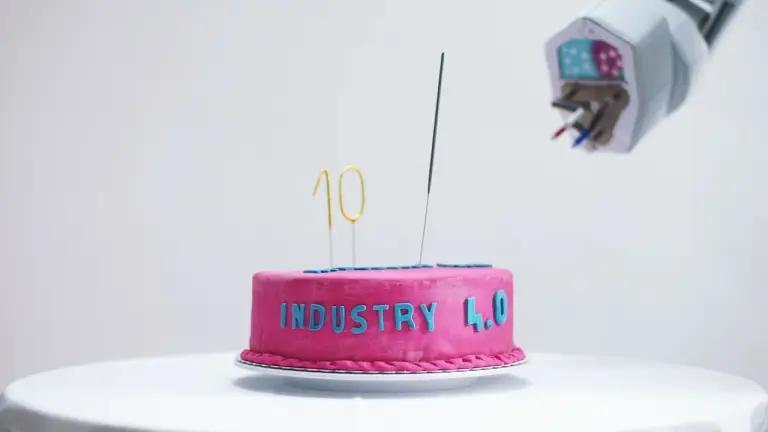
Loading the video requires your consent. If you agree by clicking on the Play icon, the video will load and data will be transmitted to Google as well as information will be accessed and stored by Google on your device. Google may be able to link these data or information with existing data.
Our story: Ten years of Industry 4.0 and Bosch
2011: The fourth industrial revolution gets a name
A smart factory with machines that are connected, communicate with each other, and organize themselves — with people at the center of it all, orchestrating more efficient, more flexible, and more customized production. Originally called “cyber-physical production systems,” this idea receives a catchier name in 2011: “Industrie 4.0” (Industry 4.0). With the official go-ahead given for the German government’s pioneering project, the German term quickly takes hold around the world.
2012: Bosch takes over the chairmanship of the Industry 4.0 working group
From concept to development: chaired by Siegfried Dais, former deputy chairman of the board of management of Robert Bosch GmbH, and Prof. Henning Kagermann, president of acatech, the Industry 4.0 working group draws up initial recommendations for implementing a successful path into the fourth industrial age. They send their recommendations to the German federal government in October 2012. Dais comments: “During the course of our work together it has become apparent that Germany possesses all the necessary competencies in the fields of manufacturing technology and mechanical engineering to continue to enjoy global success in tomorrow’s world of the Internet of Things and Services.”
2013: From Industry 4.0 to technology “Invented for life”
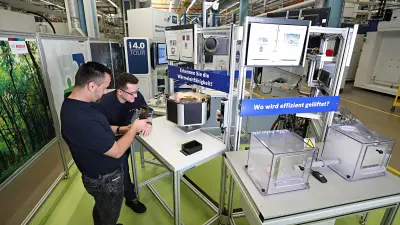
“We must turn data into knowledge, and knowledge into benefits,” said Bosch CEO at the time Volkmar Denner at the ZVEI Annual Convention in 2013. The company is already using connectivity software in its own manufacturing operations, and is also developing its own software solutions for industrial processes. Its declared aim is to derive business models from the technical potential of Web 3.0 that will lead to a better quality of life. This is one of the reasons Bosch begins working in 2013 on the “Energy-efficient factory” project spearheaded by the Technical University of Darmstadt.
2014: Bosch premieres the world’s first robot coworker
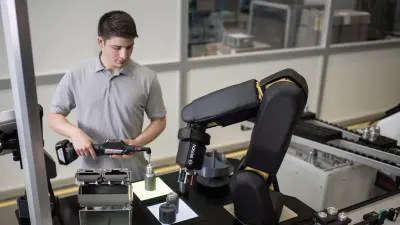
The world’s first robot certified to work side by side with human operatives without the need for additional protective housing comes to life at Bosch in 2014. Its name describes its purpose: APAS — automatic production assistant. This is not only a big step in the development of human-robot collaboration (HRC), but also a crucial one for Industry 4.0. Bosch has developed APAS so that it can autonomously take over the feeding of machines, palletizing, and assembly in the shortest possible time.
2015: Bosch establishes “Connected Industry”
Bosch pools its connected manufacturing expertise in its company-wide “Connected Industry” innovation cluster. This brings the company a step closer to becoming the leading user and leading supplier in connected manufacturing. Bosch launches an education offensive as well: associates without a degree are to be offered training for IT and commercial jobs that usually require an academic degree. The aim is to respond to the growing demand for software expertise and prepare its workforce for Industry 4.0 jobs. The first group to participate in the program is made up of roughly 80 skilled workers.
2016: Bosch readies old tech for Industry 4.0
Old machine, rapid connectivity, new benefits. This is the reasoning behind Bosch’s decision to take a closer look at its company founder’s 130-year-old lathe. Sensors and software combined with IoT-enabled industrial control catapult the lathe from 1887 into the Industry 4.0 era. This is more than just a symbolic action: according to studies in 2016, tens of millions of machines are still being assembled in plants worldwide without being enabled for Industry 4.0.
2016: Industry 4.0 on cloud nine — Bosch’s own cloud for IoT services
With the launch of its own cloud for internet-based services, Bosch becomes a full-service provider for connectivity and the internet of things. In the Bosch IoT Cloud, the company runs various applications for its connected mobility, connected industries, and connected buildings businesses.
2017: Robots become colleagues
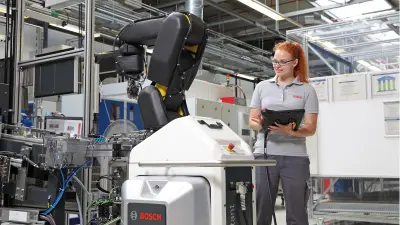
With the APAS workstation, Bosch creates the first workplace where people and machines work side by side. People remain indispensable as decision-makers and drivers, supported by the precision and endurance of the production assistants. In this setup, Workplace 4.0 adapts to the individual — everything from the height of the work surface to the speed or guidance assistance for new processes.
2018: Bosch establishes Industry 4.0 operating unit
Bosch creates a new operating unit for connected industry. This brings together all its Industry 4.0 activities, especially concerning software and services. It also ensures that the company has the best possible team for the job: customers wanting to connect the entire value stream can now consult the new unit for support. The unit launches with 500 associates in Germany, Hungary, and China.
2019: Bosch counts on training — and a smartphone for manufacturing
Developed by Bosch and the Chamber of Industry and Commerce, the first Germany-wide vocational training program geared to the Industry 4.0 skill set is launched. The training program is now also offered in other countries, such as China. That same year, Bosch debuts a new software solution: CtrlX AUTOMATION — ctrl being short for ’control.“ The solution makes systems and machines as accommodating as a smartphone, with functions that can be customized and updated — much the way a smartphone is via apps.
2020: Bosch puts first 5G campus network into operation

Data is transferred extremely reliably and ultra-fast, machines react almost instantaneously, wireless is becoming the standard, and people and machines work together safely and without barriers at all times — the new reality at the Bosch plant in Stuttgart-Feuerbach. This is the beginning of the real-time revolution for Industry 4.0 at Bosch, as it aims to gradually roll 5G out to all its roughly 240 plants around the world.
2020: Bosch’s pioneering Industry 4.0 role helps make its global manufacturing operations carbon neutral

All 400 Bosch locations worldwide no longer leave a carbon footprint. Connected manufacturing has played a crucial part in this achievement: Industry 4.0 solutions can detect energy consumption and make it more efficient. In over 100 plants and locations worldwide, Bosch is already utilizing an energy platform that is part of its own Industry 4.0 portfolio. Intelligent algorithms help predict energy consumption, avoid peak loads, and correct deviations in energy consumption.
2021: Toward zero-defect production with AI
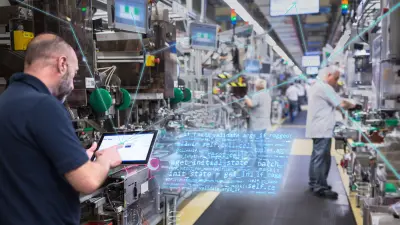
The Bosch Center for Artificial Intelligence (BCAI) has developed a system based on artificial intelligence (AI) that can detect and remedy anomalies and malfunctions in the manufacturing process at an early stage. This use of AI ensures more efficient, environmentally friendly manufacturing with better products. The AI solution currently supports production in around 50 plants and 800 production lines, and will eventually be rolled out to all 240 Bosch plants.
2021: Bosch plant receives honor from World Economic Forum
For the second time, the World Economic Forum has honored a Bosch plant as an Industry 4.0 lighthouse project. In Suzhou, China, Bosch demonstrates how digitalized manufacturing and logistics can increase efficiency and quality in equal measure. Bosch already added its plant in Wuxi, China, to the list of shining examples back in 2018. There, the World Economic Forum highlighted the capability of connected solutions for troubleshooting and predictive maintenance as exemplary for a factory of the future.
2021: Bosch generates four billion euros in sales with Industry 4.0
Since launching Industry 4.0 ten years ago, Bosch has generated more than four billion euros in sales with its portfolio in this area. In 2020 alone, the company recorded sales of more than 700 million euros with connected solutions for manufacturing and logistics. Bosch is not only a leading supplier, but also a leading user: Bosch plants now count more than 120,000 machines and over 250,000 devices that feature connectivity, such as integrated camera systems and robots. Bosch projects indicate that connected solutions increase productivity by as much as 25 percent.

